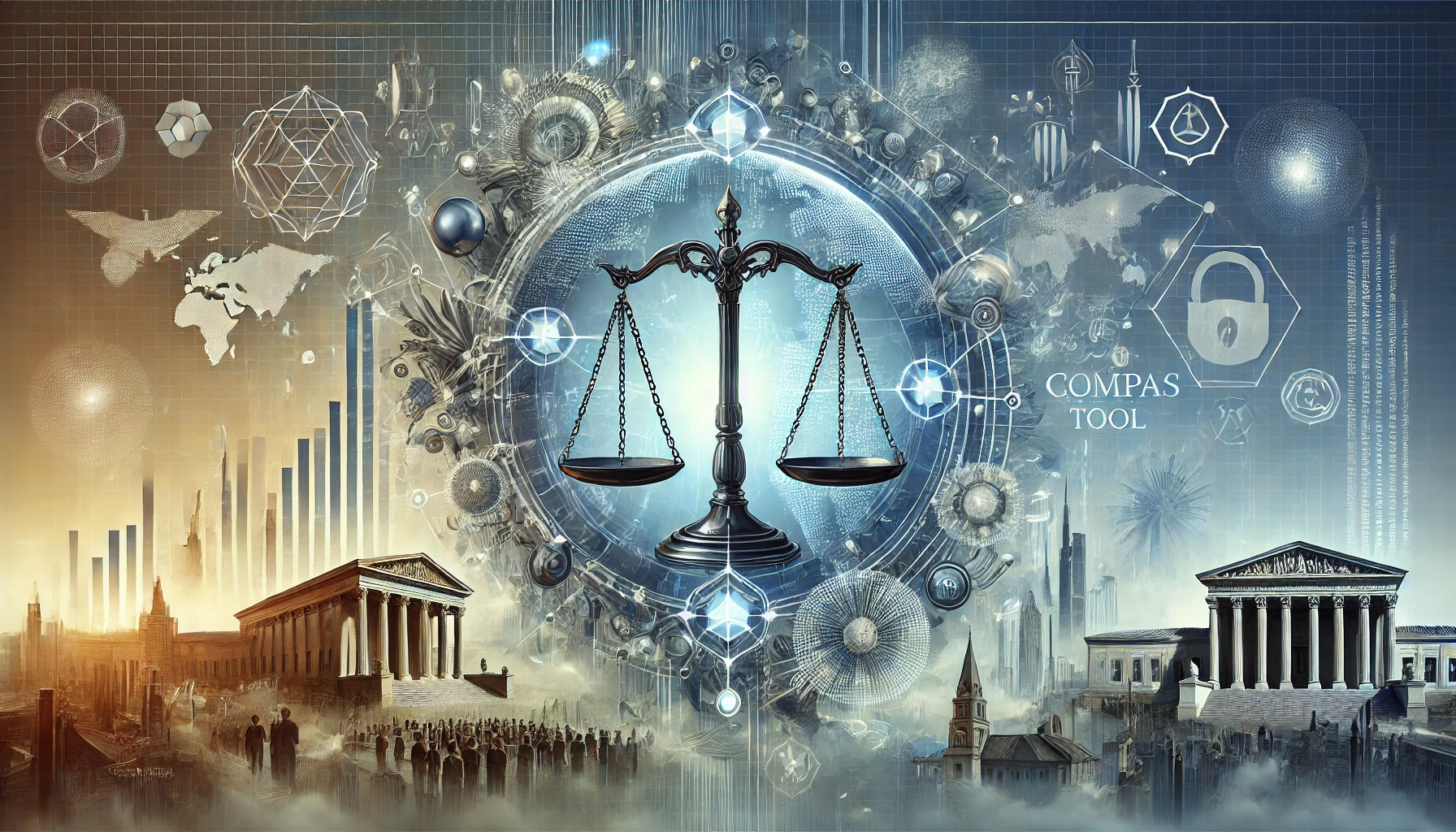Authored By: Niimatullah Abdulmumin
Baze University, Abuja
Abstract
AI is quickly changing the world and the medical field is not left behind. By providing previously unprecedented improvements in surgery, diagnosis, treatment planning, and healthcare administration. The medical industry is becoming more and more dependent on machine intelligence, as seen by DeepMind’s ground-breaking ophthalmology diagnostics and Google’s AI surpassing radiologists in breast cancer identification. But there are serious ethical and legal issues with this technological advancement. When an autonomous system makes a mistake, who is accountable? How can patient consent remain meaningful when decisions stem from opaque algorithms? This essay examines the expanding use of AI in healthcare, the significant legal ambiguities it creates, and the pressing need for regulatory frameworks that address algorithmic bias, data privacy, liability, and cross-border governance. In order to ensure that the law keeps up with AI’s healings and innovation, it ultimately advocates for proactive legal solutions that strike a balance between innovation and accountability.
Introduction
An AI created by Google Health accomplished what was previously believed to be impossible in 2023: it diagnosed 50% more cases of breast cancer than human physicians, outperforming skilled radiologists in this area1. This is not an unusual occurrence. Artificial intelligence is drastically changing the medical field, from robotic surgeons carrying out precise procedures with human- like accuracy to AI systems that can diagnose rare diseases in a fraction of the time. However, the emergence of AI in medicine presents a fresh set of difficulties that the legal system is not yet prepared to address. What happens if a machine, not a human doctor, makes a choice that could save a life? When an AI diagnosis is incorrect, who is responsible?
In 2024, the industry’s increasing dominance is evident from the fact that, global investments in AI healthcare technologies had topped $20 billion2. However, the legal ramifications remain unclear in spite of these developments. AI is not only changing medicine but also causing a reckoning in legal systems around the world, from malpractice lawsuits to patient consent. Who is responsible if a robot surgeon makes a mistake; the patient, the hospital, or the developer? How we strike a balance between accountability and innovation will depend on these questions. The law must transform as AI grows more and more integrated into healthcare.
This article explores the transformative role of AI in medicine, the legal uncertainties it introduces, and the need for robust frameworks to ensure innovation does not outpace accountability.
Understanding AI in the Medical Field
In the field of medicine, artificial intelligence (AI) refers to computer programs that are able to carry out tasks like diagnosis, prognosis, treatment planning, and patient monitoring that normally call for human intellect. With the help of machine learning algorithms that have been trained on enormous datasets, these systems are able to identify patterns, make predictions, and support decision-making remarkably quickly and accurately.
For example, DeepMind’s AI3 has proven to be as accurate as human professionals in diagnosing more than 50 eye conditions4. In a similar vein, pathologists can detect malignant cells more quickly and precisely than they could with manual inspection because to systems like PathAI5. In addition to increasing diagnostic precision, these technologies also streamline workflows and lessen the mental strain on medical professionals. Deep Learning is a more advanced type of Machine Learning, it uses layered neural networks that resemble the human brain to process massive quantities of data and create even more accurate predictions. This has made it possible to make progress on tasks like image recognition, which are essential in disciplines like.
Another example is IBM Watson Health, which provides oncology decision support by analysing patient data and medical literature to suggest treatment options.
AI is now being used in a number of medical fields:
- Diagnostics: AI models are frequently faster and more accurate than human experts at interpreting medical images such as MRIs, CT scans, and mammograms.6
- Surgery: Robotic devices such as the da Vinci Surgical System assist surgeons in executing delicate procedures with increased precision and less invasiveness.7
- Administrative Support: AI Chabots manage electronic health records, schedule appointments, and triage symptoms, which lessens the workload for medical personnel and enhances patient satisfaction.8
Benefits and Prospects of AI in Health Care
- Better Diagnostics: AI improves the accuracy and speed of In the identification of breast cancer, for example, Google Health’s AI performed better than radiologists, greatly lowering false positives9.
- Access and Cost-Effectiveness: Automating processes such as record-keeping and triage reduces operating expenses. Additionally, AI-powered telemedicine fills in healthcare shortages in underprivileged regions10.
- Robotic Surgery and Predictive Analytics: Minimally invasive procedures are made possible by robotic devices like da Vinci. Predictive AI technologies improve results by identifying potentially fatal illnesses early11.
- Global Reach and Customized Care: AI promotes personalized medicine by customizing care according to lifestyle and genetics12. It also reduces the lack of healthcare workers
Legal and Ethical Challenges
When AI Makes a Mistake, Who Is at Fault? As AI grows more prevalent in healthcare, determining who is responsible for what becomes more difficult. If an AI makes a mistake, is the hospital, the developer, or the doctor at fault? Though they might be pertinent, current legal frameworks such as vicarious liability, product liability, and negligence lack the clarity required for AI to make decisions on its own13.
Informed Consent and the”Black Box”14 Issue with AI Because AI systems frequently function as “black boxes,” it is difficult to see how they make decisions. Patients may not fully comprehend the role AI plays in their treatment, which complicates informed consent and raises ethical questions as well as possible legal repercussions for healthcare practitioners15.
Data Protection and Privacy Laws, such as the General Data Protection Regulation (GDPR), place strict requirements on AI developers to protect patient privacy and prevent unauthorized access to data16. Algorithmic Bias and Patient Discrimination Bias in AI training data can result in misdiagnoses or unequal treatment for certain groups. For instance, AI systems trained primarily on data from one demographic may struggle to diagnose conditions in other demographics, exposing healthcare providers to discrimination lawsuits under anti-bias laws17.
Medical AI is classified as “high-risk” under the EU’s Artificial Intelligence Act, which places strict requirements on developers in terms of accountability, transparency, and human monitoring18. This classification aims to establish legal criteria that take into account the delicate nature of healthcare.
Existing Legal Structures As “high-risk,” medical AI is subject to stringent requirements for openness, human control, and post-market monitoring under the EU Artificial Intelligence Act19. In delicate industries like healthcare, this classification aims to guarantee the security and reliability of AI systems.
AI-driven software is regulated by the Food and Drug Administration (FDA) in the US as a medical device (SaMD)20. Regulating adaptive algorithms that constantly learn and change, however, continues to provide difficulties21.
Due to the special characteristics of autonomous decision-making, traditional tort and contract law doctrines frequently fail to adequately handle AI related problems. Internationally, uneven restrictions make cross-border AI tool deployment much more challenging.
Recommendation
- Create legal concepts tailored to AI to fill up liability
- To encourage openness in clinical decision-making, explainable AI is
- Give medical and legal professionals multidisciplinary
- Encourage the harmonization of international regulations to control the use of AI across borders22.
Conclusion
AI is a double-edged scalpel in modern healthcare: it saves lives while cutting deep into the legal fabric of accountability and patient rights. Although it has many advantages, there are also many complicated drawbacks. To keep pace with this innovation, legal systems must evolve. In the operating room of tomorrow, law must not be sterile it must be surgical.
Reference(S):
- US Food and Drug Administration, Artificial Intelligence and Machine Learning (AI/ML)- Enabled Medical Devices (FDA, 2021) https://fda.gov/medical-devices/software- medical-device-samd/artificial-intelligence-and-machine-learning-aiml-enabled-medical- devices accessed 29 April 2025.
- I Glenn Cohen, ‘The FDA’s Role in Regulating Artificial Intelligence’ (2020) 382 New England Journal of Medicine
- Andrea Bertolini, ‘Artificial Intelligence and Civil Liability’ (2019) 10(4) European Journal of Risk Regulation
- Marta Cantero Gamito and Hans-Wolfgang Micklitz, ‘The Role of the EU in Transnational Regulation of AI’ (2022) 59(4) Common Market Law Review
- World Health Organization, Ethics and Governance of Artificial Intelligence for Health(WHO 2021) https://www.who.int/publications/i/item/9789240029200 accessed 29 April2025.
- European Commission, Proposal for a Regulation Laying Down Harmonised Rules on Artificial Intelligence (Artificial Intelligence Act) COM(2021) 206 final.
1 Scott Mayer McKinney et al, International evaluation of an AI system for breast cancer screening (2020) Nature https://www.nature.com/articles/s41586-019-1799-6 accessed 29 April 2025.
2 Global Healthcare AI Market to Reach $20 Billion by 2024′ (2024) Healthcare Tech News https://www.healthcaretechnews.com/ai-market-growth-2024 accessed 29 April 2025.
3 DeepMind AI is a cutting-edge artificial intelligence company and research lab founded in 2010, acquired by Google in 2014 (now under Alphabet Inc). It is renowned for developing advanced machine learning systems capable of solving complex problems that often exceed human performance. DeepMind also created an AI model to predict acute kidney injury up to 48 hours in advance, offering a critical window for clinical intervention
4 Pearse A Keane et al, ‘Deep learning for detecting retinal disease and referral in retinal scans: a retrospective study’ (2018) 390(10102) The Lancet 2272 https://doi.org/10.1016/S0140-6736(18)31644-5 accessed 29 April2025.
5 Andrew H Beck et al, ‘Systematic analysis of breast cancer morphology uncovers stromal features associated with survival’ (2011) Science Translational Medicine https://doi.org/10.1126/scitranslmed.3002564 accessed 29 April 2025.
6 McKinney SM et al, ‘International evaluation of an AI system for breast cancer screening’ (2020) Nature https://www.nature.com/articles/s41586-019-1799-6.
7 Intuitive Surgical, ‘About da Vinci Surgery’ https://www.davincisurgery.com/ accessed 29 April 2025.
8 US FDA, ‘Artificial Intelligence and Machine Learning in Software as a Medical Device’ (2023) https://www.fda.gov/media/145022/download.
9 Scott Mayer McKinney and others, ‘International Evaluation of an AI System for Breast Cancer Screening’ (2020) Nature https://www.nature.com/articles/s41586-019-1799-6 accessed 29 April 2025.
10 Eric J Topol, Deep Medicine: How Artificial Intelligence Can Make Healthcare Human Again (Basic Books 2019) 210.
11 FDA, ‘Artificial Intelligence and Machine Learning in Software as a Medical Device’ (2023) https://www.fda.gov/media/145022/download accessed 29 April 2025.
12 ibid
13Sandra Wachter, Brent Mittelstadt and Chris Russell, ‘Why Fairness Cannot Be Automated: Bridging the Gap Between EU Non-Discrimination Law and AI’ (2021) 41(4) Computer Law & Security Review 105567.
14 Black Box AI refers to artificial intelligence systems whose internal workings and decision-making processes are not visible or understandable to users.
15 Bryce Goodman and Seth Flaxman, ‘European Union Regulations on Algorithmic Decision-Making and a “Right to Explanation”’ (2017) AI Magazine https://doi.org/10.1609/aimag.v38i3.2741.
16 Regulation (EU) 2016/679 of the European Parliament and of the Council (General Data Protection Regulation) [2016] OJ L119/1.
17 ibid; Wachter, Mittelstadt and Russell (n 1).
18 European Commission, ‘Proposal for a Regulation Laying Down Harmonised Rules on Artificial Intelligence (Artificial Intelligence Act)’ COM (2021) 206 final.
19 US Food and Drug Administration, Artificial Intelligence and Machine Learning (AI/ML)-Enabled Medical Devices (FDA, 2021) https://www.fda.gov/medical-devices/software-medical-device-samd/artificial-intelligence-and-machine-learning-aiml-enabled-medical-devices accessed 29 April 2025.
20 ibid
21 ibid
22 World Health Organization, Ethics and Governance of Artificial Intelligence for Health (WHO 2021) https://www.who.int/publications/i/item/9789240029200 accessed 29 April 2025.





